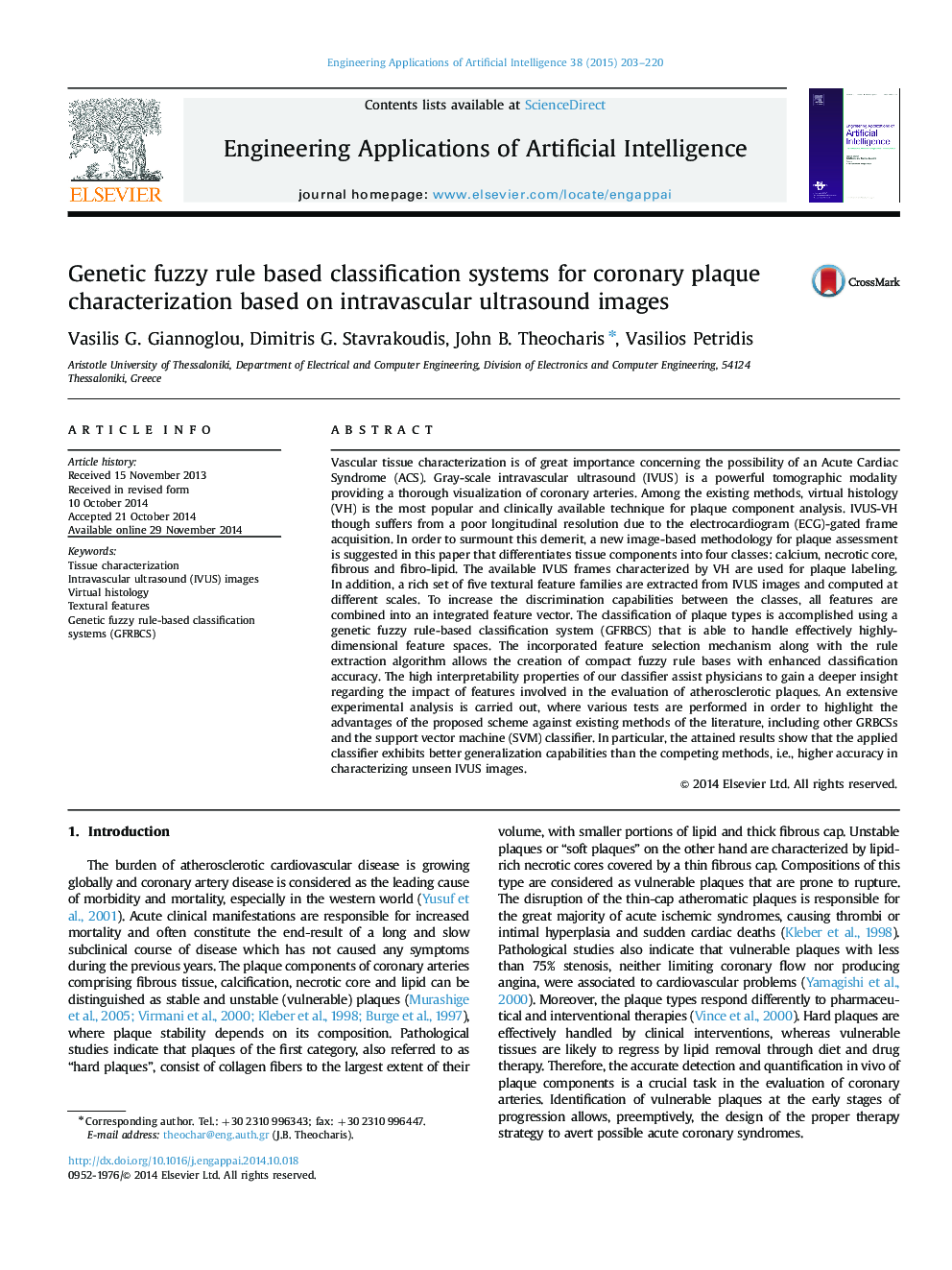| Article ID | Journal | Published Year | Pages | File Type |
|---|---|---|---|---|
| 380523 | Engineering Applications of Artificial Intelligence | 2015 | 18 Pages |
• Image-based method for coronary plaque characterization from IVUS images.• Linguistic fuzzy rule-based classification with high interpretability properties.• Embedded feature selection properties• Image textural analysis with multiple extraction windows• Proposed methodology outperforms other linguistic systems and the SVM
Vascular tissue characterization is of great importance concerning the possibility of an Acute Cardiac Syndrome (ACS). Gray-scale intravascular ultrasound (IVUS) is a powerful tomographic modality providing a thorough visualization of coronary arteries. Among the existing methods, virtual histology (VH) is the most popular and clinically available technique for plaque component analysis. IVUS-VH though suffers from a poor longitudinal resolution due to the electrocardiogram (ECG)-gated frame acquisition. In order to surmount this demerit, a new image-based methodology for plaque assessment is suggested in this paper that differentiates tissue components into four classes: calcium, necrotic core, fibrous and fibro-lipid. The available IVUS frames characterized by VH are used for plaque labeling. In addition, a rich set of five textural feature families are extracted from IVUS images and computed at different scales. To increase the discrimination capabilities between the classes, all features are combined into an integrated feature vector. The classification of plaque types is accomplished using a genetic fuzzy rule-based classification system (GFRBCS) that is able to handle effectively highly-dimensional feature spaces. The incorporated feature selection mechanism along with the rule extraction algorithm allows the creation of compact fuzzy rule bases with enhanced classification accuracy. The high interpretability properties of our classifier assist physicians to gain a deeper insight regarding the impact of features involved in the evaluation of atherosclerotic plaques. An extensive experimental analysis is carried out, where various tests are performed in order to highlight the advantages of the proposed scheme against existing methods of the literature, including other GRBCSs and the support vector machine (SVM) classifier. In particular, the attained results show that the applied classifier exhibits better generalization capabilities than the competing methods, i.e., higher accuracy in characterizing unseen IVUS images.
Graphical abstractFigure optionsDownload full-size imageDownload as PowerPoint slide
